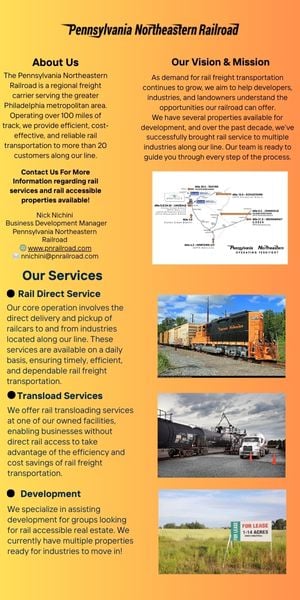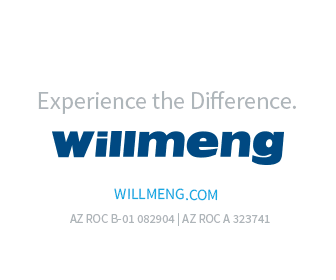KPMG's New Training Center Showcases Offsite Construction

Modular components helped bring the facility online faster.
Corporate training centers can be more than just stark spaces full of classrooms. When done well, a facility can provide an environment that encourages collaboration and connection to an organization’s culture while fostering innovation through engaging and multisensory architectural experiences.
This experience is what professional services firm KPMG sought when creating KPMG Lakehouse, the company’s learning, development and innovation facility in Lake Nona, Florida, near Orlando. It features 90 collaborative learning and innovation spaces, dining and social areas for people to relax and connect, fitness and outdoor recreational areas, and design elements that reinforce KPMG’s history, values and culture.
According to a February article from Quartz, KPMG spent $450 million to build Lakehouse, which opened in January. David Turner, KPMG’s chief financial officer, told the publication that the firm created the facility because the company had been spending more than $100 million a year on the roughly 2,500 employee training sessions it hosts across the U.S.
KPMG used innovative building strategies to develop the facility on a compressed schedule, with construction commencing in May 2017. To complete the complex project as quickly and efficiently as possible without sacrificing the design elements, KPMG partnered with JLL Project and Development Services, DPR Construction and Gensler, a design and architecture company.
Connection with Nature
The development team knew from experience that places of learning and collaboration benefit when all the senses are engaged through the use of elements of nature and natural light. For Lakehouse, this included drawing inspiration from Lake Nona’s ecosystem and roughly 230 days of sunlight each year.
The building plan incorporated curves and bends to make movement through the facility an appealing experience. Large amounts of glass throughout the project provide natural daylight and expansive views. Natural light and ventilation have been shown to improve employee health and well-being, as well as performance.
At Lakehouse, different types of spaces — including “neighborhoods” for group work and nooks for individual quiet work — are integrated throughout the building to foster serendipitous meetings and places for focus, collaboration and networking. This reflects research from Gallup, which shows that organizations can yield nearly 150% higher earnings per share when compared to peers if they successfully connect and engage employees.
Offsite Construction Saves Time, Money
To ensure the project was delivered as quickly and cost-effectively as possible, one strategy deployed was to manufacture key energy infrastructure components offsite, rather than constructing them onsite after the building shell was complete. For instance, the electrical equipment — including switchgear, switchboards, panel boards and transformers — was assembled on skids and tested before delivery to the site. Once delivered to the electrical rooms, the only remaining tasks were to connect the incoming and outgoing wiring.
Similarly, the central energy plant was manufactured as a fully modular system, comprising three 900-ton chillers, three chilled-water pumps, three condenser water pumps, a filter system, and all the electrical components, controls and piping to support an entire chilled water system. After being assembled at an offsite factory in South Carolina, the plant was shipped to the construction site in four sections and dropped into place.
Curtainwall units also were engineered and assembled offsite in Orlando. A subcontractor worked with the design team early in the process to produce the most efficient and expedient solution. Rather than construct the exterior walls on site — requiring each trade to follow the next as materials are delivered, loaded into the building, cut to fit and set in place — the curtainwalls arrived as ready-to-place panels, reducing the onsite labor and associated costs of installation. Based on a target value for this aspect of the project, the team was able to meet both its design and budgetary goals.
In addition, 800 bathrooms were prefabricated to simply plug into the facility’s single-occupancy guest rooms. These units were procured from a single source, rather than from dozens of vendors and suppliers. Single-source procurement reduced construction time and labor costs; most of the bathroom units were delivered before the building was even topped out.
Bathrooms typically constitute 80% of hotel room buildout costs — given the multiple trades and sequenced work in bathrooms, with only one trade able to work at a time — so the cost and schedule savings were significant. The bathrooms were built in sections, assembled at a factory and then delivered to the site. The prefabricated bathrooms exceeded quality expectations because they were produced in a controlled manufacturing environment. The wall panels, for example, were built and tiled on a flat work surface, which allowed for better craftsmanship. Given the usual 48- to 72-hour cure time for the tile and grout, building offsite also drove efficiency.
An Assist from Technology
To further save time and reduce costs, the project team used Lean construction techniques. According to a 2002 report from researchers at the University of Huddersfield in England and the University of California, Berkeley, Lean construction is “a way to design production systems to minimize waste of materials, time, and effort in order to generate the maximum possible amount of value.”
The KPMG team also used high-tech tools that improved the accuracy of the design and construction drawings. For example, cloud-based building information modeling (BIM) collaboration software was used to accelerate planning and collaboration on iPads. The team also used automated software powered by cameras and artificial intelligence to track all stages of the project, for sharing progress documentation in the field. This included cloud-based software that allowed the team to combine photos captured by drone into single images for construction review.
Additionally, the team used technology to accelerate drywall finishing, including a drywall fabrication machine that eliminated the need to apply beading on outward-facing drywall corners. By using a three-color drywall coating procedure, the craftsmen were able to identify each stage of finishing to avoid over-working an area or missing a stage in the finishing process across the nearly 800,000-square-foot space.
KPMG Lakehouse was operating at full capacity in the weeks after it opened, hosting up to 800 people per day. However, the threat of COVID-19 temporarily suspended in-person classes and trainings. No date for a full reopening has been set due to the uncertainty of the pandemic.
Bob da Silva is a senior vice president with JLL and Bill Flemming is managing director of real estate services with KPMG.







